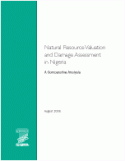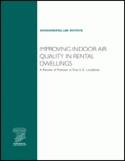
Research Reports
ELI publishes Research Reports available for free download that present the analysis and conclusions of the policy studies ELI undertakes to improve environmental law and policy. These reports contribute to education of the profession and disseminate diverse points of view and opinions to stimulate a robust and creative exchange of ideas. Those publications, which express opinions of the authors and not necessarily those of the Institute, its Board of Directors, or funding organizations, exemplify ELI’s commitment to dialogue with all sectors.
Oil fields are abundant in the Niger Delta and provide the Nigerian government with much of its revenue. Environmental damage caused by oil production activities including exploration, drilling, production, transportation, and refining threatens biodiversity of the Niger Delta and the livelihoods of its inhabitants. Many of the people in the Niger Delta depend on the abundant natural resources of the delta for fishing, herbal medicines, food, fiber, and other uses.
Read More >
This report reviews state and local policies that address indoor air quality-related problems in residential rental housing, and describes the government programs charged with carrying out those policies. It provides an in-depth discussion of five local jurisdictions -- San Francisco; Boston; Seattle; Marion County, Indiana; and Stamford, Connecticut.
Read More >
Harnessing Consumer Power: Using Certification Systems to Promote Good Governance explores how certification mechanisms that have been used previously to promote environmental and social sustainability can be applied to advance transparent and democratic government processes, reduce corruption, and promote peace. Certification systems may be designed to directly cut off major sources of revenue for armed conflict or to indirectly improve environmental and social sustainability such as ecotourism certification. Highlighting the current international certification systems for
Read More >